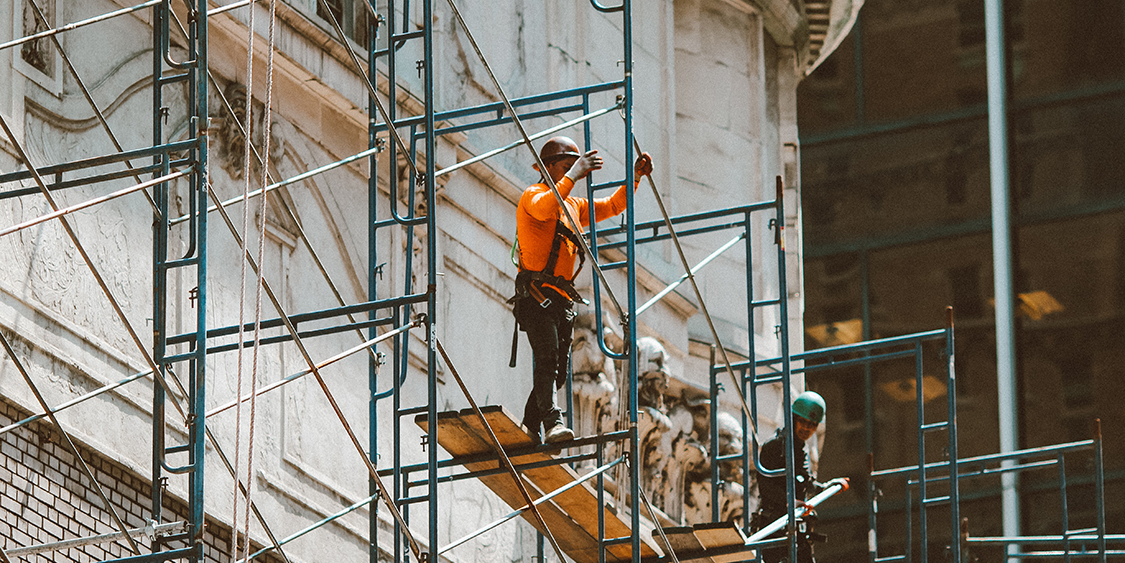The majority of scaffold accidents on the construction site are caused by falling, slipping or being struck by an object from above. All of these accidents can be prevented by taking the proper precautions.
General Safety Tips
- To prevent slipping hazards, conduct a daily routine inspection to ensure all walking and working surfaces are free from potential hazards. If you spot a hazard, remove it.
- Never move, dismantle or alter a scaffold unless under the supervision of a qualified person while doing such activities.
- Never move a scaffold with workers still on it.
- Keep scaffold loads below maximum capacity and remove your equipment when the scaffold is not in use.
- Be alert for bad weather. High winds and driving rain and snow can be dangerous when working at high levels.
Protection for Those Below
- Always hoist up heavy tools, equipment and supplies, rather than carry them up by hand.
- There must be a nine cm-high toe board to prevent things falling off a scaffold. If things on the scaffold are taller than nine cm (above the toe board), other systems, like debris nets, must be used to catch falling tools or materials.
- Always wear a hard hat when working on and around a scaffold.
- Never walk under or near the scaffold if roped off when work is being performed above.
Fall Protection Basics
To help protect workers against potentially deadly falls, require use of fall protection for those working one and one-half metres or more above a lower level. Fall protection consists of either a personal fall-arrest system or guardrail systems, depending on the job. If a worker is using a fall arrest system, he or she should keep the following in mind:
- Always attach the lanyard to a vertical lifeline, horizontal lifeline or scaffold structural member.
- If using a vertical lifeline, make sure that to be fastened to a fixed safe point of anchorage, independent of the scaffold. This includes structural members of buildings, but not standpipes, vents, electrical conduit, etc. They may give way under the force of a fall.
- Clean and test gear regularly, and never tamper with a fall protection system.
Find Out More:
This list is not exhaustive; assessing your exposures and taking the appropriate precautions can go a long way toward protecting your business and your workers. This proactive approach is particularly important when it comes to identifying and avoiding gaps in your risk management program.
Download our “Construction Employee Safety Manual” guide for an in-depth list of more ways to minimize gaps in your risk management and keep your employees safe:




